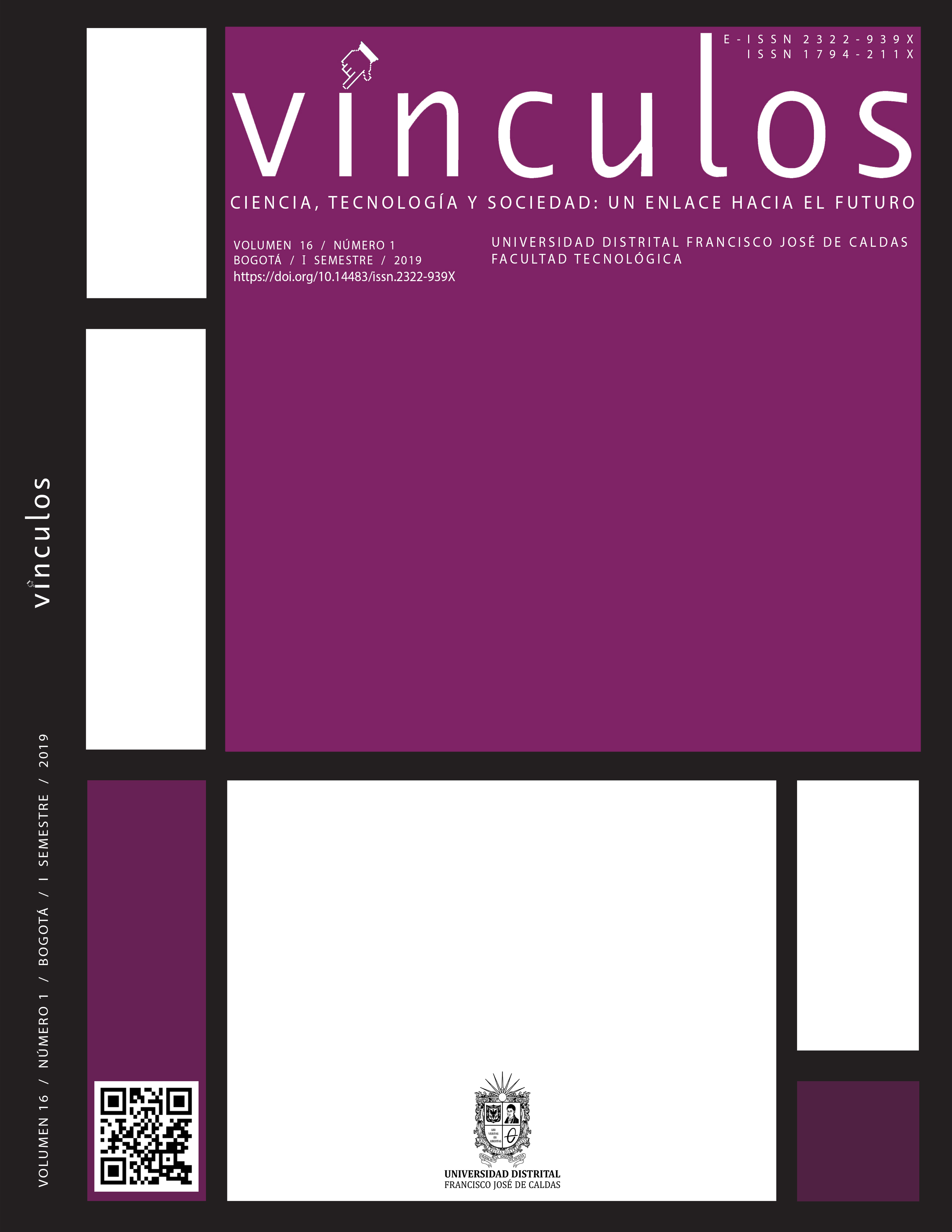DOI:
https://doi.org/10.14483/2322939X.15575Published:
2019-06-30Issue:
Vol. 16 No. 1 (2019)Section:
Research and DevelopmentSimulation of forces applied to the human femur: Analysis of finite elements
Simulación de fuerzas aplicadas al fémur humano: Análisis de elementos finitos
Keywords:
cortical bone, critical zones, deformation, effort, femur, tension (en).Keywords:
hueso cortical, zonas críticas, deformación, esfuerzos, fémur, tensión (es).Downloads
Abstract (en)
This document analyzes the efforts made to the human femur through a simulation of finite elements in Solidworks, in order to carry out the design of the femur in this study, the average height of the population of Malaysia were used, which is similar to that of the average Colombian population (Table 1.) and for the tests, a material with the same mechanical characteristics was simulated in the program of the human cortical bone, permitting a more approximate visualization of stresses and deformations to which the femur is exposed in the usual state and thus, identify the critical areas in which the probability of fracture or wear is greater, the results of this analysis do not apply For women in a state of pregnancy or people with osteoarthritic diseases. This analysis is important to identify which are the areas that present greater deterioration, considering that the bones lose their property of self-recovery over the years increasing the probability of presenting a fracture, having this information clear the prosthetic studies and medical treatments focused on the femur can be deepened. In this analysis, it can be identified that the male femur has greater resistance to tension and deformation than the female femur and how the femoral head is the most critical area of both the female and male fêmur.
Abstract (es)
En este documento se analizan los de esfuerzos realizado al fémur humano, por medio de una simulación de elementos finitos en Solidworks; para realizar el diseño del fémur en este estudio se utilizaron las medidas promedio de la población de malasia que es similar a las medidas de la población promedio Colombiana (Tabla 1) y para las pruebas se simuló en el programa un material con las mismas características mecánicas del hueso cortical humano, permitiendo una visualización más aproximada de esfuerzos y deformaciones a los que se ve expuesto el fémur en estado habitual y así identificar las zonas críticas en las cuales la probabilidad de fractura o desgaste es mayor, los resultados de este análisis no aplican para mujeres en estado de embarazo ni personas con enfermedades osteo-artriticas, este análisis es importante para identificar cuáles son las zonas que pueden presentar mayor desgaste teniendo en cuenta que los huesos pierden su propiedad de auto- recuperación con el paso de los años aumentando la probabilidad de presentar fractura, teniendo clara esta información se puede hacer mayor profundización en estudios de prótesis y tratamientos médicos enfocados al fémur. En este análisis se puede identificar como el fémur masculino tiene mayor resistencia a la tensión y a la deformación que el fémur femenino y como la cabeza femoral es la zona más crítica del fémur tanto femenino como masculino.
References
[2] R. S. M. Álvarez, & J. A. K. Velutini, “Anatomy of the Human Femoral Head: Considerations in Orthopedics, Part II”. Biomechanics and Microscopic Morphology, vol. 29, no. 2, pp. 371–376, 2011
[3] J. B. Cabrera, R. E. Cinqualbres & Y. R. Botello, “Original Article Comparative Numerical Analysis of fixatives for the treatment of proximal fractures of the femur Introduction”, Mechanical Engineering, vol. 14, no. 3, pp. 199-208, 2011.
[4] E. R. Rincón, A. R. Felip & R. C. Alonso, “Mechanical characterization of bone material”, Technology and development, vol 2, 2004.
[5] M. Cerrolaza & M. A. G. Alfonso, (2013). “Simulation and computational analysis of the medular duct of the femur in the presence of a hip prosthesis”, Rev. Engineering Faculty. Vol
28, no. 4, 25–34.
[6] E. R. Romo. Thesis: “Final Degree Project Degree in Industrial Technology Engineering Numerical modal analysis of the femur. Influence of boundary conditions on natural frequencies”, Sevilla University, Degree in Industrial Technology Engineering, 2016.
[7] J. B. Cabrera, R. E. Cinqualbres & Y. R. Botello. “Comparative numerical analysis of fixatives for the treatment of proximal fractures of the femur Mechanical Engineering”, Mechanical Engineering, vol. 14, no. 3, pp. 13–14, 2011.
[8] El tiempo, “The average height of the Colombian population according to research carried out by the Children's Cardio Foundation and the Colombian Association of Pediatric Endocrinology with the support of the Karolinska Institute (Sweden) and funded by Colciencias” Available at: https://www.eltiempo.com/archivo/documento/CMS-13128617
[9] M. Y. Baharuddin, M. R. A. Kadir, A. H. Zulkifly, A. Saat, A. A. Aziz & M. H. Lee, “Morphology Study of the Proximal Femur in Malaysian Population”. Int. J. Morphol, vol. 29, no. 4, pp. 1321-1325, 2011. https://doi.org/10.4067/s0717-95022011000400042
[10] D. Lacroix, I. Proubasta & J. A. Planell (2004). “Intramedullary nails vs. Osteosynthesis plates for femur fractures: A finite element analysis”, Biomechanics, vol. 12, no. 1, 64–70, 2004.
[11] A. M. Reyes, F. A. Verásteguí, J. A. Collazos, “Prototype development of a fingerprint biometric information system”, Rev. vínculos, vol. 15, no. 2, 2018.


3.png)



